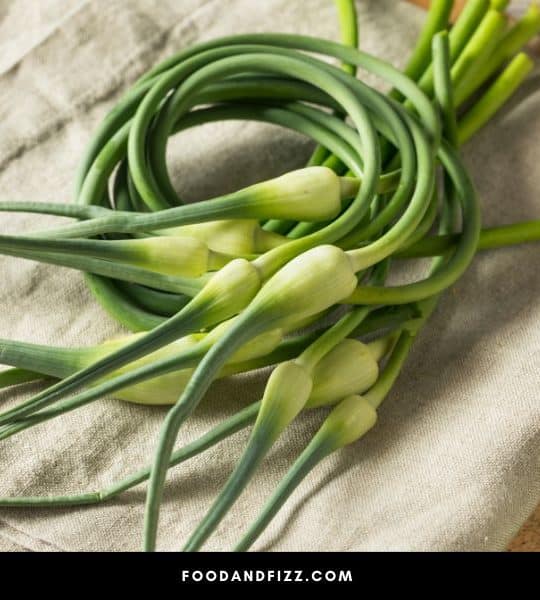Garlic is a vegetable eaten for its numerous health benefits to the body. It is bulb-shaped and has an appearance similar to onions but is primarily white in color.
Garlic contains several lobes inside, each known as a garlic clove. The bulb is the most eaten part of garlic.
Can You Eat Garlic Leaves?
Garlic leaves are edible and have almost the same benefits as the bulb, although they may differ slightly. The garlic leaves are sometimes referred to as garlic scapes and can be used for various purposes like making salads. Other common foods you can use garlic scapes as an ingredient include stews, teas, sauces, and soups.
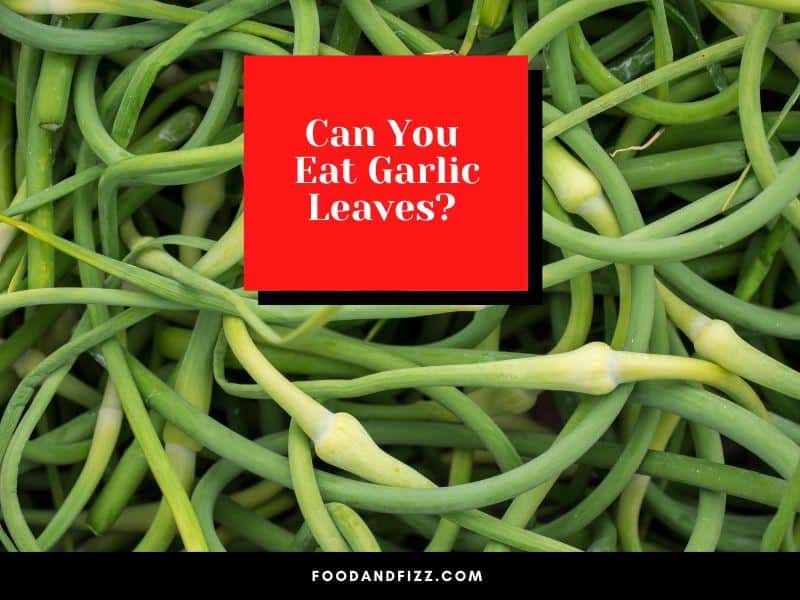
What Are the Benefits of Eating Garlic Leaves?
Whether you decide to use garlic leaves or bulbs, there are notable health benefits you can draw from them. Before, I used to think that the only part of the garlic that was useful was the bulb.
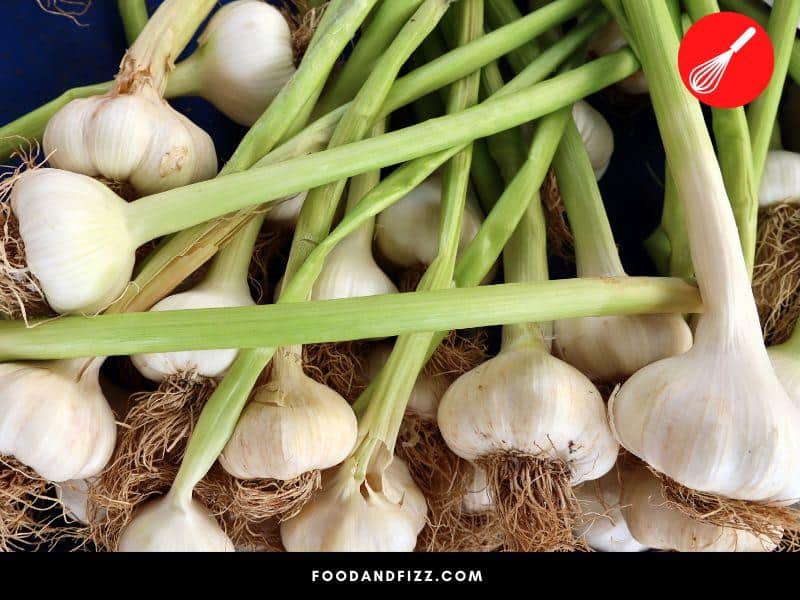
However, when I realized that leaves too are edible, I did my research to see their numerous health benefits. Here are some of the health gains of eating green garlic or what is known as garlic leaves.
- It provides a boost to one’s immune system. That’s because it contains naturally occurring antibiotics that protect the body from bacterial attacks.
- Green garlic aids in the digestion process. The presence of antibiotic and antioxidant properties in garlic leaves provides bacterial balance during the digestion of food in the stomach.
- It has anti-inflammatory properties that help prevent gut inflammation, thus eliminating possible discomfort.
- Green garlic contains vitamin C, which hastens iron and other minerals uptake in the body. It is iron and several other minerals that assist significantly in blood circulation.
- If you have a challenge in your body that needs detoxification, then garlic leaves are what you need to be eating. That’s because green garlic contains diuretic abilities that can assist the kidneys and the liver in effectively cleaning the blood.
- With cancer becoming so prevalent in today’s world, eating garlic leaves may be helpful as it has anticancer potential.
- Green garlic can also potentially prevent heart diseases or limit some of the symptoms. That’s because, according to medical researchers, it has the potential to reduce harmful cholesterol levels. Cholesterol around the heart or in blood vessels may lead to heart diseases.
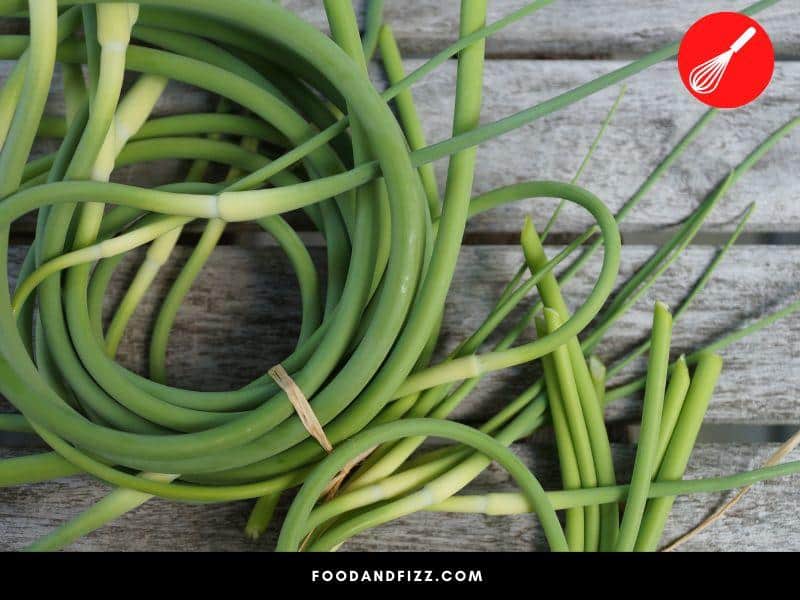
How Do I Prepare Garlic Leaves for Any Recipe
I use garlic leaves for several recipes. While some will require a similar preparation for its use as an ingredient, others may need a different one.
For that reason, I’m going to offer my three top techniques for getting my green garlic ready for any recipe I hope to make.
Green Garlic Powder
It takes time to prepare but can be used in several recipes, including bread and cake making, stews, soup, tea, rice, meat, etc.
Procedure
- Step 1: Cut fresh garlic leaves from the plant. Try to avoid contaminated ones or those that are overgrown.
- Step 2: Clean the garlic leaves thoroughly and place them on food dehydrator trays. Make sure there is no overlapping and none of the leaves is placed over the other.
- Step 3: Set the dehydrator temperatures at 100-110°F and let the dehydration process commence. It could take 12 hours to 2 days for complete dehydration of the leaves. That depends on the size and amount of leaves.
- Step 4: Put the now dried leaves in a mortar and, using the pestle, crush them into a fine powder. You may also decide to use a blender to crush the dried leaves.
There it is! You have powdered green garlic.
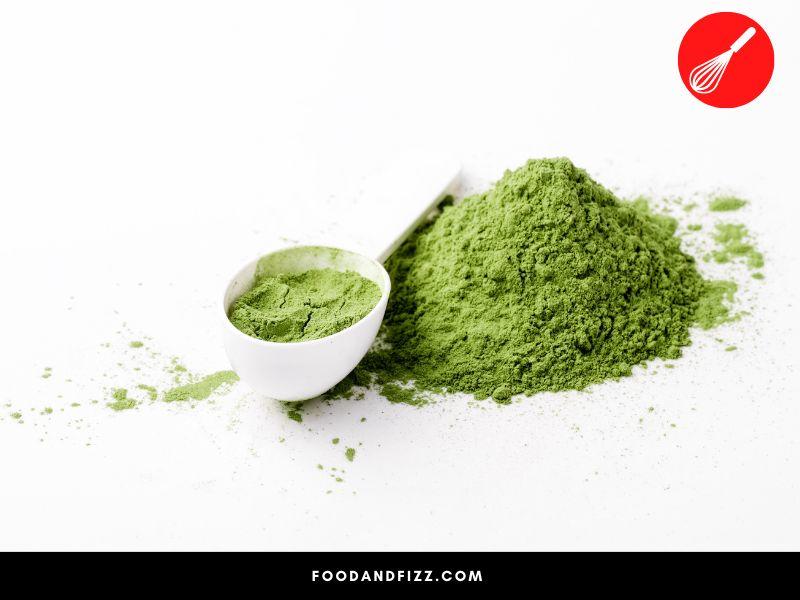
Sliced Garlic Leaves
It is the easiest and the shortest way to prepare garlic leaves for use as an ingredient in different recipes.
Procedure
- Step 1: Look for fresh scapes that are neither too old nor too young and cut them. Be sure to leave the new sprouting scapes so as not to kill the plant.
- Step 2: Thoroughly clean the green garlic and place them on a surface where they can quickly rinse.
- Step 3: Place the garlic leaves on a chopping board and, using a sharp knife, cut them into small pieces of your choice.
Garlic Paste
Preparing a garlic paste is a little complicated compared to slicing or powdering. That’s because several ingredients are involved, each added at a specific time.
Here is the procedure I use to prepare my garlic paste.
Ingredients
- Four garlic scapes
- ½ Teaspoon of sea salt
- One tbs of olive oil
- Two chopped light celery center ribs
- Two tbs of unsalted butter
- ¼ teaspoon pepper
- ¼ cup of white wine
- Two large clean, and sliced spring onions
- ¼ cup of hot water
- Two teaspoons of finely minced fresh thyme
Procedure
- Step 1: Set the oven temperatures at 375 °F and preheat for about 10 to 15 minutes.
- Step 2: Place the green garlic on a well-rimmed baking dish and sprinkle olive oil on the top.
- Step 3: Put the dish in the oven and roast for 15 to 20 minutes.
- Step 4: Add salt, celery, spring onions, pepper, one spoon of butter, wine, and thyme. Continue heating for another 10 to 15 minutes.
- Step 5: If you can trace any charred or dark parts on the green garlic, then remove them at this stage.
- Step 6: Put the content in a blender and add the extra spoon of butter. Blend the mixture until it smoothens.
- Step 7: If too thick, add the hot water and continue blending to make a pourable liquid.

Frequently Asked Questions to Can You Eat Garlic Leaves?
Can I Eat Garlic Leaves?
Garlic leaves are edible and have almost similar benefits to those of bulb garlic. One can add them to soups, stew, rice, meat, sauce and other dishes.
What Health Benefits Can I Derive From Eating Garlic Leaves?
Green garlic is good for safeguarding your health as it contains anti-inflammatory and antibiotic properties. Again, it helps in the reduction of bad cholesterol in the body.
Are Garlic Leaves The Same As Green Garlic?
Garlic leaves and green garlic are the same things. Some people might also refer to the garlic leaves as garlic scapes.
Conclusion to Can You Eat Garlic Leaves?
Garlic leaves are healthy and edible and offer a host of health benefits like the bulb. Also known as garlic scrapes or green garlic, they can be made into a powder or a paste, or simply sliced and added to different recipes.

